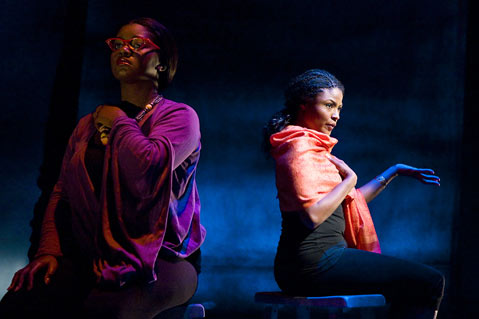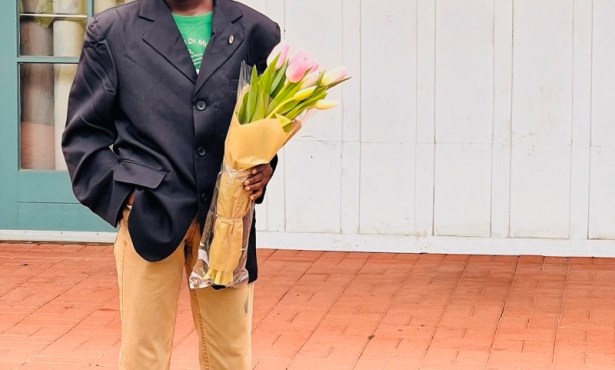In the Continuum at ETC
New Play Explores Tragedy of HIV/AIDS in Two Worlds

When it comes to survival, the saying goes that “it’s every man for himself.” The irony of this lonely principle is that, because of their innate compassion, the victims of a system that encourages self-interest tend to be women. This theme shows up powerfully in Ensemble Theatre Company’s new production of In the Continuum, which is directed by Saundra McClain. The play focuses on the parallel lives of an African and an African-American woman, both of whom are held hostage by today’s most dreaded disease, HIV/AIDS. In the Continuum exposes the stigma of being an HIV carrier and explores the various female reactions of the infected and non-infected.
Actresses Julia Pace Mitchell and Tiffany Adams play the main characters Nia and Abigail, respectively, but they also play all the supporting roles in each other’s respective worlds. Nia is a teenager in South Central, Los Angeles. Emancipated from her mother’s care, she is left to fend for herself. Abigail is an ambitious Zimbabwean woman. A wife and a mother, she is a somewhat successful news reporter. Both women share the blessing of being pregnant and the curse of being HIV-positive. What’s more, Nia and Abigail likewise experience the hopeless quest for more life and its ultimate unavailability to those who are fated to die, the nonexistent support of men they naively believed in before, and an ultimate martyrdom.
The brilliance of In the Continuum comes from the almost innumerable multiplicity of its perspectives. Most notable in this regard is the play’s creative technique of requiring the two actresses to address, and thereby create, a horde of invisible interlocutors. Another ingenious feature of the play is its ability to maintain the clarity of two separate storylines while still dramatizing the culture clash between Nia and Abigail’s irreconcilable worlds.
Despite all the pain, regret, and fear for the future it portrays, In the Continuum manages to send an uplifting message about the universal figure of a woman. Although she keeps lying to her unborn baby that mommy will be there to pay for college, and the Mercedes, and the mansion in an imaginary future, and even though she craves revenge-as if that could answer the question, “why me?”-the composite figure of a woman created by these two parallel lives still can’t bring herself to inflict pain on others for her own mistakes. Maybe that is the principle of “every woman for herself.”



